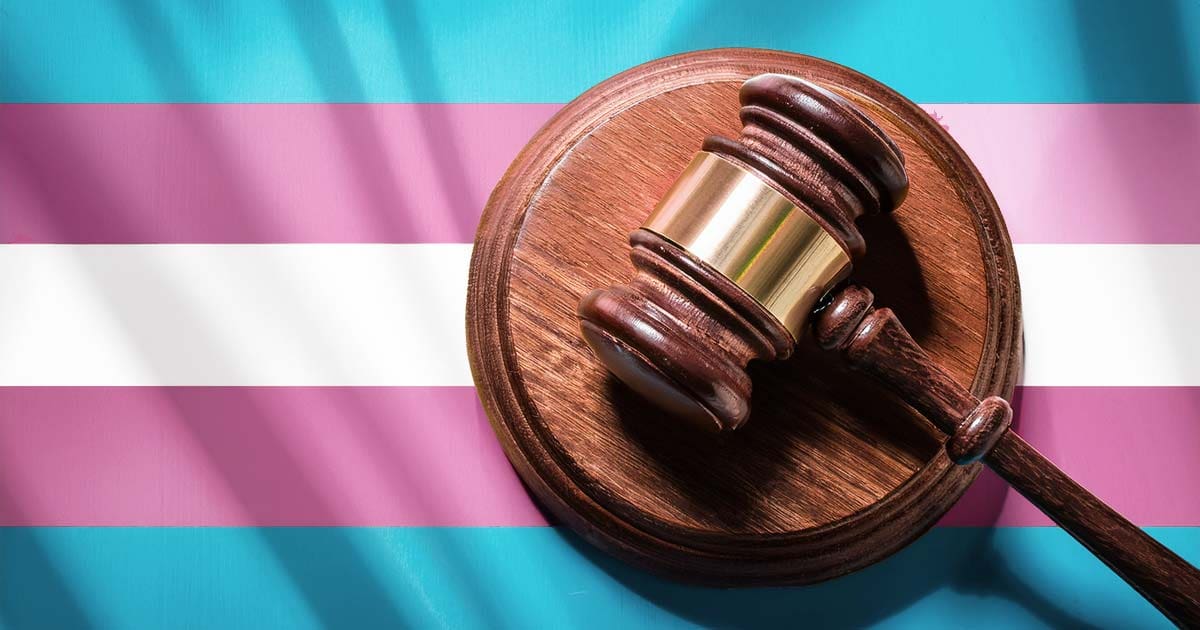Foreign Investment in Latin America – Geopolitical Futures

Report on Foreign Direct Investment in Latin America and its Alignment with Sustainable Development Goals
FDI Trends and Contribution to SDG 8 and SDG 17
Foreign Direct Investment (FDI) in Latin America and the Caribbean demonstrated consistent growth in 2024, a trend that is crucial for advancing SDG 8 (Decent Work and Economic Growth). However, a potential slowdown is anticipated for the current year. A significant portion of these capital inflows originates from established transnational firms, with a deceleration potentially indicating shifting investor confidence. The primary sources of FDI, which are fundamental to achieving SDG 17 (Partnerships for the Goals), are:
- United States (38%)
- European Union (15%)
- Intra-regional investment from Latin America and the Caribbean (12%)
- China and Hong Kong (2%)
Key Sectors for SDG-Aligned Investment
Two technology-related sectors present significant opportunities for FDI that can directly support the achievement of multiple Sustainable Development Goals.
1. Critical Minerals for Sustainable Industrialization and Clean Energy
The region’s substantial reserves of critical minerals are vital for the global transition to green technologies, directly supporting SDG 7 (Affordable and Clean Energy) and SDG 13 (Climate Action). To fully leverage this potential, a strategic shift is required from raw material exportation towards developing local, value-added manufacturing. This transition is essential for fostering SDG 9 (Industry, Innovation and Infrastructure) and promoting SDG 12 (Responsible Consumption and Production).
Nations positioned to benefit include:
- Chile: Copper and lithium
- Argentina: Lithium
- Peru: Copper
- Brazil: Graphite and rare earth elements
2. Digital Infrastructure for Innovation and Reduced Inequalities
Investment in communications infrastructure is a second promising area. This includes technologies that underpin artificial intelligence, such as cloud storage, data centers, and high-speed networks. Such investments are a direct catalyst for SDG 9 (Industry, Innovation and Infrastructure). Furthermore, enhancing digital capabilities can reduce regional disparities, contributing to SDG 10 (Reduced Inequalities) by improving access to information and economic opportunities.
Analysis of investment data from the past five years identifies the following key destinations:
- Leading Destinations: Mexico and Brazil are expected to continue attracting the majority of FDI in this sector.
- High-Potential Countries: Colombia and Chile demonstrate strong potential for expanding their digital infrastructure capabilities.
Analysis of Sustainable Development Goals in the Article
1. Which SDGs are addressed or connected to the issues highlighted in the article?
- SDG 8: Decent Work and Economic Growth – The article’s central theme is Foreign Direct Investment (FDI), a key driver of economic growth. It discusses the growth of FDI in Latin America and the Caribbean and its potential to stimulate economic activity.
- SDG 9: Industry, Innovation and Infrastructure – The article explicitly identifies two key sectors for future investment: critical minerals and communications infrastructure. It highlights the need to move from exporting raw materials to producing “higher value-added goods,” which relates to industrialization, and points to investment in “cloud storage, data centers and high-speed networks,” which is about infrastructure and innovation.
- SDG 12: Responsible Consumption and Production – The focus on extracting “critical mineral reserves” such as copper, lithium, and graphite directly relates to the sustainable management and use of natural resources.
- SDG 17: Partnerships for the Goals – The article details the sources of FDI, including from the United States, the European Union, and within the Latin American region itself. This flow of international capital is a core component of global partnerships for sustainable development.
2. What specific targets under those SDGs can be identified based on the article’s content?
-
SDG 8: Decent Work and Economic Growth
- Target 8.1: Sustain per capita economic growth. The article discusses the growth of FDI, which is a primary mechanism for stimulating economic growth in the region.
- Target 8.2: Achieve higher levels of economic productivity through diversification, technological upgrading and innovation. The article points to technology-related sectors like communications infrastructure and AI support as drivers of future FDI, aligning with this target.
-
SDG 9: Industry, Innovation and Infrastructure
- Target 9.2: Promote inclusive and sustainable industrialization. The article’s statement about the “key challenge” being to move “away from exporting raw materials toward producing higher value-added goods” directly addresses the goal of increasing industrialization and manufacturing capabilities.
- Target 9.a: Facilitate sustainable and resilient infrastructure development. The identification of “communications infrastructure, particularly technologies that support artificial intelligence, such as cloud storage, data centers and high-speed networks” as a promising area for FDI directly supports this target.
- Target 9.b: Support domestic technology development, research and innovation. Investment in sectors that support AI and the processing of critical minerals into higher-value goods implies a need for and support of domestic technological capabilities.
-
SDG 12: Responsible Consumption and Production
- Target 12.2: Achieve the sustainable management and efficient use of natural resources. The article’s focus on Latin America’s “significant critical mineral reserves” (copper, lithium, etc.) highlights the importance of managing these finite resources as they are extracted for global markets.
-
SDG 17: Partnerships for the Goals
- Target 17.3: Mobilize additional financial resources for developing countries from multiple sources. The entire article is about FDI, a key financial resource. It quantifies these flows and identifies their sources (US, EU, intra-regional).
3. Are there any indicators mentioned or implied in the article that can be used to measure progress towards the identified targets?
-
SDG 8 & SDG 17
- Indicator: Foreign Direct Investment (FDI) inflows. The article explicitly states that FDI “grew steadily in 2024” and that a slowdown could occur. This is a direct measure of financial flows (Indicator 17.3.2) and a proxy for economic stimulus (related to Target 8.1).
- Indicator: Sources of FDI as a percentage of the total. The article provides specific figures: “United States (38 percent), the European Union (15 percent) and Latin America and the Caribbean itself (12 percent).” This data can be used to track the diversity and origin of financial partnerships.
-
SDG 9
- Indicator: Investment in technology and communications infrastructure. The article identifies this as a specific area for FDI, mentioning “cloud storage, data centers and high-speed networks.” Tracking investment amounts in these specific sectors would measure progress toward Target 9.a.
- Indicator (Implied): Share of value-added goods in exports. The challenge to move “away from exporting raw materials toward producing higher value-added goods” implies a need to measure the proportion of processed goods versus raw materials in the region’s exports. This would be a key indicator for Target 9.2.
-
SDG 12
- Indicator (Implied): Volume of critical minerals extracted. The article names specific minerals in high demand (copper, lithium, graphite, rare earth elements). Tracking the extraction rates of these resources is a way to measure the pressure on natural resources, relevant to Target 12.2.
4. Summary Table of SDGs, Targets, and Indicators
| SDGs | Targets | Indicators |
|---|---|---|
| SDG 8: Decent Work and Economic Growth |
8.1: Sustain per capita economic growth. 8.2: Achieve higher levels of economic productivity through diversification and technological upgrading. |
Total volume of Foreign Direct Investment (FDI) inflows. |
| SDG 9: Industry, Innovation and Infrastructure |
9.2: Promote inclusive and sustainable industrialization. 9.a: Facilitate sustainable and resilient infrastructure development. 9.b: Support domestic technology development and innovation. |
Investment in communications infrastructure (data centers, high-speed networks). (Implied) Share of value-added goods in exports vs. raw materials. |
| SDG 12: Responsible Consumption and Production | 12.2: Achieve the sustainable management and efficient use of natural resources. | (Implied) Volume of critical minerals extracted (copper, lithium, graphite). |
| SDG 17: Partnerships for the Goals | 17.3: Mobilize additional financial resources for developing countries from multiple sources. |
Total volume of Foreign Direct Investment (FDI) inflows. FDI inflows broken down by source country/region (e.g., US 38%, EU 15%). |
Source: geopoliticalfutures.com

What is Your Reaction?
 Like
0
Like
0
 Dislike
0
Dislike
0
 Love
0
Love
0
 Funny
0
Funny
0
 Angry
0
Angry
0
 Sad
0
Sad
0
 Wow
0
Wow
0













































































